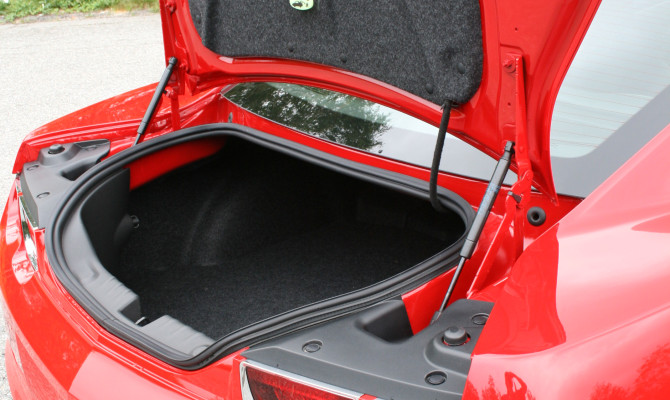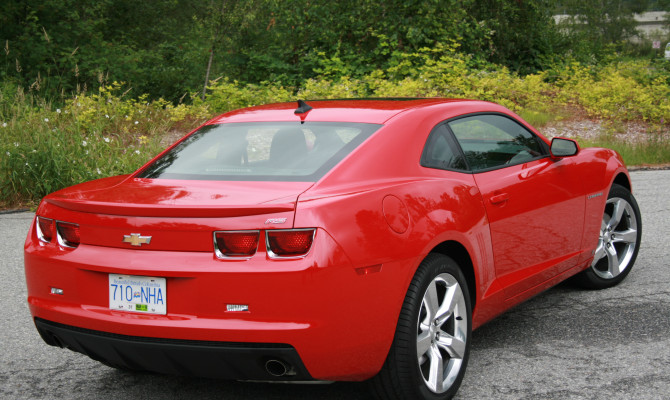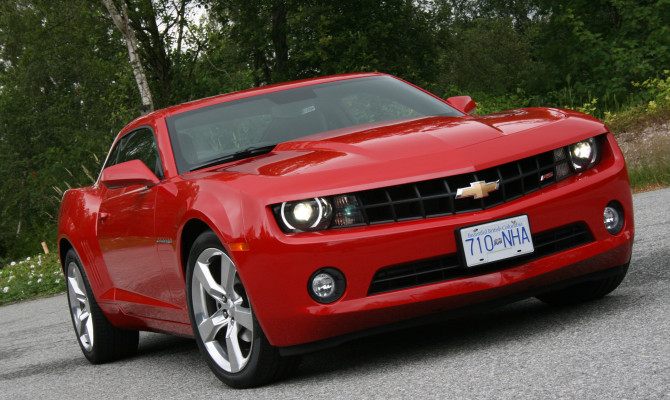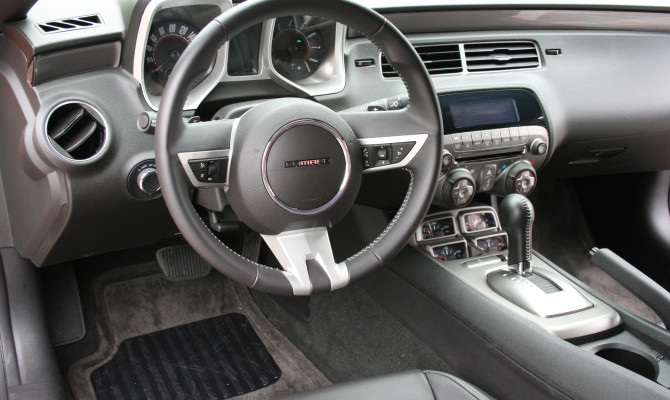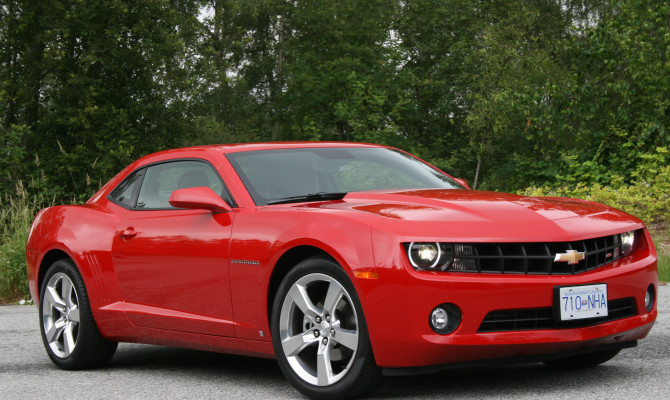The Camaro’s trunk is also on the small side but all is forgiven when you step on the gas pedal and hit the road…
The 2010 model year Chevrolet Camaro was designed in the USA, engineered in Australia and built in Canada.
In addition to a very attractive return-to-roots styling exercise, this Camaro boasts a sophisticated rear-drive chassis, two powerful engine choices and lots more.
Initially, the new Camaro came in LS, LT and SS trim levels. The base engine is a Cadillac sourced direct-injection 3.6-litre V6. It can generate 304 horsepower and is mated to either a six-speed manual transmission or a six-speed automatic.
A more potent 6.2-litre V8 engine (from the Corvette) lies under the hood of the SS. When paired with a six-speed manual it can pump out 425 horsepower. A 400 horsepower edition of this engine, with a fuel saving cylinder deactivation system, came paired to the optional six-speed automatic transmission.
Chevrolet claimed the Camaro V6 can reach 100 km/hour in just 6.1 seconds and SS can do it in a tire blistering 4.7 seconds, which is super-car territory. Fuel consumption is also less (or better) than you might expect and both engines can run on regular gasoline. The Camaro V6 (auto) is rated at 11.4 L/100km in city and 6.7 L/100km on highway. And the SS (auto) is rated at 13.2 L/100km in city and 7.9 L/100km on highway.
Compared to the original ’67 this Camaro is longer, wider and taller. Bigger wheels, which came in 18-inch to 21-inch rim sizes, accounted for much of the height increase. Regardless of the rim size originally ordered, the overall height and tire-to-body gap remained the same, so that it doesn’t detract from the overall look of the car.
A major difference between Chevrolet’s Camaro and, its rival, the Ford Mustang is the rear axle and suspension setup. Mustang has a rigid rear axle and the Camaro uses a more sophisticated independent link system with coil springs attached to an isolated sub-frame. It should result in a better riding and handling car, but that debate rolls on.
A driving drawback that’s common to many sports cars is rear visibility and small side mirrors don’t help matters. The Camaro’s trunk is also on the small side but all is forgiven when you step on the gas pedal and hit the road.
A Camaro Convertible was introduced for the 2011 model year. Other significant changes included an eight-horsepower output increase for the base 3.6-litre V6 and a “Head-Up” dash display was offered (on 2LT and SS trim levels).
The base engine was also upgraded to a new “LFX” 3.6-litre, V6. Although its displacement is the same as the original, this new engine is lighter and more powerful. A limited edition high-performance Camaro ZL1 arrived in 2012. This car has a supercharged 6.2-litre V8 engine that can produce an insane 580 horsepower … and is collector car certainty. A special 45th Anniversary Package was also offered on Camaro and Camaro SS.
The Chevrolet Camaro made it on the Consumer Reports “Recommended’ list of good, reliable cars to buy. Great to look at and a hoot to drive, even the V6 engine editions of this Camaro have more than enough power for most drivers.
Used Price Check: 2010 to 2012 Chevrolet Camaro (September 2013)
Year Edition Expect to Pay
2010 Coupe LT $18,000 to $22,000
2011 Coupe LT $21,000 to $25,000
2012 Coupe LT $25,000 to $29,000
Prices vary depending on a used vehicle’s condition, mileage, usage and history. A complete mechanical check should always be performed by a reliable auto technician prior to purchase.
Recalls on the 2010 to 2012 Chevrolet Camaro:
2012 – The primary stage of the driver’s airbag may not deploy during a crash (where deployment is warranted). Dealers will replace the steering wheel airbag coil.
2010 – On vehicles equipped with a V8 engine, the positive battery cable may contact the starter motor housing, which could cause chafe damage to the cable insulation. This could create an electrical short, which can result in a no start condition, cause the engine to stall without the ability to restart, or cause an engine compartment fire. Dealers will reroute the positive battery cable to ensure adequate clearance.
Contact:
Recent Comments
- { Enjoyed your Forest of Bowland in the BMW X5M, particularly the photo of the BMW in front of the main part of Stonyhurst College where... }
- { Bantam designed the Jeep, not Willy's or Ford. The American military gave the original Bantam prototype to Willys and Ford to copy. There is plenty... }
- { All Escalades come with a 6.2-lilter V8 engine that produces 420 horsepower. A six-speed automatic is the only transmission offered and drives the rear wheels.... }
- { Alexandra is an excellent journalist. }
Popular Posts
- Journey to a ‘Sparkling’ Luxury Okanagan Resort “Four lucky readers will put a Dodge Journey’s weekend-...
- The Need For Speed: Hike Those Highway Limits More than half of those polled believe the province sho...
- Drives-U-Crazy… Erratic drivers. An early morning drive from Kelowna to Vancouver is nor...
- Readers Respond: The Pros and Cons of Increasing B.C. Speed Limits Increasing the speed limits will only increase risk to...
- Honda CR-V Review: The Compact Crossover To Get Things Done The CRV is a very stylish and aerodynamic crossover veh...


